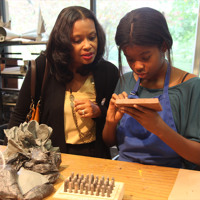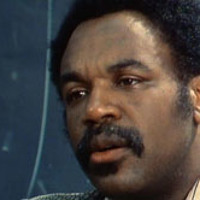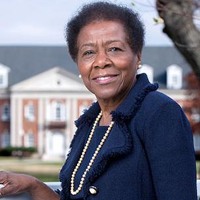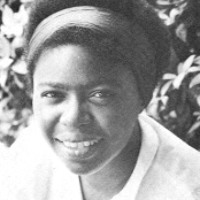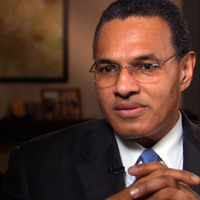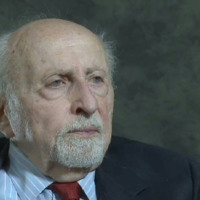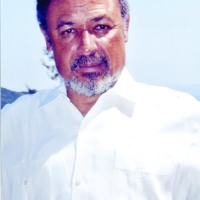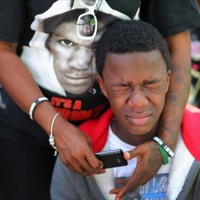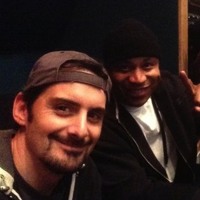Saturday, November 30, 2013
Five Back-to-School Tips - EM
In this special Education Matters segment, internationally renowned education expert Pedro Noguera, Ph.D., Peter L. Agnew Professor of Education at New York University, offers five tips for parents and students for a successful school year. From getting to know the teacher to keeping a watchful eye on school friends, these practical tips remind parents what they need to do to give their children the support they need.
Back to School Tip 5: Build a Strong Parent/Child Relationship - EM
In this special Education Matters series, internationally renowned education expert Pedro Noguera, Ph.D., Peter L. Agnew Professor of Education at New York University, offers tips for parents and students for a successful school year. Tip number five: Continue to build a strong relationship with your child.
Back to School Tip 4: Visit Your Child’s School - EM
In this special Education Matters series, internationally renowned education expert Pedro Noguera, Ph.D., Peter L. Agnew Professor of Education at New York University, offers tips for parents and students for a successful school year. Tip number four: Visit your child’s school regularly.
Back to School Tip 3: Know Your Child’s Friends - EM
In this special Education Matters series, internationally renowned education expert Pedro Noguera, Ph.D., Peter L. Agnew Professor of Education at New York University, offers tips for parents and students for a successful school year. Tip number three: Make decisions about who your children associate with.
Back to School Tip 2: Provide a Space for Homework - EM
In this special Education Matters series, internationally renowned education expert Pedro Noguera, Ph.D., Peter L. Agnew Professor of Education at New York University, offers tips for parents and students for a successful school year. The second: Make sure your child has a place to do homework.
Back to School Tip 1: Get to Know Your Child’s Teacher - EM
In this special Education Matters series, internationally renowned education expert Pedro Noguera, Ph.D., Peter L. Agnew Professor of Education at New York University, offers tips for parents and students for a successful school year. The first: Get to know your child’s teacher.
Wednesday, October 16, 2013
Grace Flores-Hughes: A Tale of Survival - EHH
 In the 1950s, Taft, Texas, was a segregated cotton town with a sizeable Mexican-American population, all of whom lived on the South Side of the railroad tracks. It was in a part of the state had a history of Anglo-on-Mexican violence, including police brutality and lynchings. Ramona Martinez spoke to one woman was born and raised in Taft, a place where success and upward mobility were not often seen.
In the 1950s, Taft, Texas, was a segregated cotton town with a sizeable Mexican-American population, all of whom lived on the South Side of the railroad tracks. It was in a part of the state had a history of Anglo-on-Mexican violence, including police brutality and lynchings. Ramona Martinez spoke to one woman was born and raised in Taft, a place where success and upward mobility were not often seen.
Latino Veterans - EHH
Latino veterans have been fighting in America's wars since the mid 1800s. Though many join out of a sense of duty, the military benefits and the prospect of a better future are undeniable draws to service. Ramona Martinez examines whether Latino veterans have gotten enough back from the country they have fought for.
Friday, October 11, 2013
Seniors’ Moment - EHH
When we talk about immigration, many people forget that Latinos have been living in the United States for a long time, even before English settlers arrived on the East Coast. At the Vida Senior Center in Washington, D.C., many elderly Latinos come together to participate in a bicultural community and enjoy each other’s company. In honor of Hispanic Heritage Month, and to demonstrate just how many different cultures fall under the term “Hispanic,” Ramona Martinez went to the center to hear their stories.
Thursday, October 3, 2013
Latina Stereotypes - EHH
Sofia Vergara
Maid, immigrant, bombshell. Oddly these are the most common roles that Latina actresses get to play in television and movies. These roles often re-enforce stereotypes that negatively affect Latina Americans in the real world. And they've existed since Latinas made their entrance onto the screen. Ramona Martinez has more.
Tuesday, October 1, 2013
Remembering Ruben Salazar - EHH
Dreams on Ice - EHH
Friday, September 27, 2013
Life on the Fringes - EHH
Although immigration reform seems all but forgotten compared to the crisis in Syria and the debt ceiling, it is still relevant to the 11 million undocumented people in the United States. Many of those are youth who were brought to the country as children, but live in the shadows, where a chance at a better life seems all but unattainable. Ramona Martinez introduces us to one such youth who refused to live a life on the fringes of society.
Hispanic or Latino? - EHH
Hispanics are the largest and fastest growing minority group in the country. Though many are recent immigrants, Hispanics have been living in America as far back as the 16th century, even before settlers from England. But where did the terms “Hispanic” and “Latino” come from? Ramona Martinez sheds some light on the subject.
Friday, August 30, 2013
Supporting Women in Labor (The workplace, that is) - FP
As we pause to acknowledge and celebrate the contributions of workers on this national observance of Labor Day, it’s worth pondering: What would the American labor force look like if not for the contributions of women? The short answer: It would be a shell of itself, says Jones-DeWeever. She explains why, despite the progress women have made in the workplace, the American labor market in tailored to a “Leave it to Beaver” sense of family structure that, for the most part, no longer exists.
Courtland Cox - MOTM
The 1963 March on Washington for Jobs and Freedom remains the most significant mass gathering in the Civil Rights Movement, and its success was largely due to the efforts of the many committee members who planned the event. As a student at Howard University, Courtland Cox served on the steering committee as a representative for the Student Non-violent Coordinating Committee, which gave him a front-row seat to back-room conversations. Here, he recalls the controversy over the speech John Lewis planned to deliver, criticizing the Kennedy administration.
David and Toko Ackerman - MOTM
It seems almost natural that a movement with an aim of racial equity would include the young and the old, men and women, Northerners and Southerners, as well as various races. The husband and wife team of David and Toko Ackerman were true representations of this diversity. David, a self-proclaimed product of a lily-white community in Illinois, and his Japanese-born wife also reflect the various reasons that people were drawn to fight for change. The egregious racial violence in Selma, Ala., was Toko’s impetus to turn her attention toward race relations, while David’s involvement in the movement would occur almost by accident.
Esther Terry - MOTM
When the Civil Rights Movement began to gain traction throughout the south, much of the credit for its success rightly went to the college students from the nation’s Historically Black Colleges and Universities (HBCUs). Well-trained and educated, these young men and women were some of the first to take bold action in the fight for desegregation. Dr. Esther Terry, past provost of the all-girls Bennett College in Greensboro, N.C., was a young student at the school in 1960 when she participated in the sit-in at a Woolworth lunch counter. Here, she explains why “Bennett Ladies” were motivated to participate.
Gwendolyn Simmons - MOTM
Nearly 100 years after the Emancipation Proclamation, many of the Southern states in America were segregated and openly oppressive to African Americans. With themes of civil resistance, nonviolent protests, boycotts and voting rights at the heart of the Civil Rights Movement, there was another constant theme for Movement activists: danger. As a college student active with the Student Non-Violent Coordinating Committee (SNCC), Gwendolyn Simmons thought there was a surefire way to maximize her safety.
Dorie Ann Ladner and Dr. Joyce Ann Ladner - MOTM
The Civil Rights Movement is sometimes portrayed as the courageous efforts of individual men and women whose bigger-than-life heroism transformed American society. While working to prepare for the March on Washington in 1963, two sisters from Mississippi, Dorie Ann and Joyce Ann Ladner, realized there was a far reach of supporters for the Movement—from the unnamed every day person to internationally renowned entertainers. These 19- and 20-year-old sisters also realized that the constant emphasis on big-name civil rights icons was leading them to become ambivalent toward some leaders in the Movement—one in particular.
Thursday, August 29, 2013
Dorie Ann Ladner and Dr. Joyce Ann Ladner, March on Washington - MOTM
1963 was a momentous year for the Civil Rights Movement. Sit-ins, Freedom Rides, and voter-registration campaigns merged to galvanize people for the historic March in Washington on August 28. As two sisters from Mississippi— Dorie Ann and Joyce Ann Ladner—worked to prepare for the March, they realized there was a far reach of supporters for the Movement—from the unnamed every day person to internationally renowned entertainers. But before these 19 and 20-year-old sisters could immerse themselves fully in the Movement, they would have to overcome the emotion that accompanied the catastrophic news they received about a long time acquaintance.
Phil Hutchings, March on Washington - MOTM
The March on Washington was one of the largest organized efforts for human rights in United States history. With its focus on civil and economic rights for African Americans, the overarching theme of jobs and freedom permeated the nation’s capital for this August 28, 1963 event. As time leading to the March grew nearer, the primary organizer, Bayard Rustin, realized that despite garnering supporters from around the country, there was one critical place for which there had been no mobilization. Student Nonviolent Coordinating Committee member Phil Hutchings remembers receiving the call.
Robert Hayling - MOTM
Dentist Robert Hayling has been hailed as the "father" of the Saint Augustine, Fla., civil rights movement. The NAACP recruited Hayling in the early 1960s to organize demonstrations and coordinate visiting activists, including Martin Luther King Jr. in Saint Augustine. Using his dental office as a training ground for many of the motivated teens of the NAACP’s Youth Council, Hayling, through his organizing efforts, brought the city’s African-American population some rewards, but at a professional and personal cost.
William Anderson - MOTM
As much as the Civil Rights Movement was driven by the men and women who boldly took steps toward change, it was clear that not much could be done without well-run organizations taking the lead. Americus, Ga., native Dr. William Anderson founded the Albany Movement in Georgia in 1961 in an effort to forge a broad-based coalition for change. In the process, he not only brought together thousands of local citizens, but caught the attention of national leaders, including Ralph Abernathy and Martin Luther King Jr.
Friday, August 2, 2013
Freeman Hrabowski - Moments of the Movement
With so much on the line, one might think that everyone in the Black community would be on the same page when it came to fighting for civil rights. But Birmingham native Freeman Hrabowski explains that many middle-class African-Americans worried that there could be serious consequences for families of protesters. Now the president of the University of Maryland, Baltimore County, Hrabowski was one of the few middle-class children who not only joined the protests, but was trained to lead and protect the younger children who were often the catalyst for change in the movement.
Freeman Hrabowski 2 - Moments of the Movement
The bombing of the 16th Street Baptist Church in Birmingham was a turning point in the Civil Rights Movement. But for Freeman Hrabowski, now president of the University of Maryland, Baltimore County, it was personal. The Birmingham native was part of the movement as a child, and knew Cynthia Wesley, one of the four girls killed that morning. Here, he explains how the events of that day and the aftermath not only forever changed him, but Birmingham as well, and eventually, the country.
Alfred Moldovan - Moments of the Movement
With the physical safety of civil rights workers at stake, it was imperative that trained medical practitioners be on hand during protests. The Medical Committee for Human Rights served that purpose. Dr. Alfred Moldovan, a founding member of the group, was there to treat protesters at the scene of one of the most disturbing incidences of violence during the movement as SNCC workers crossed the Edmund Pettis Bridge. Here, he describes the scene and how he tried to prepare workers to protect themselves during future protests.
Carrie Young - Moments of the Movement
When a group of black college students refused to leave a segregated Woolworth's lunch counter in 1960 after being denied service, they ignited a groundswell of sit-ins across the South. These collective sit-ins led to the creation of the Student Nonviolent Coordinating Committee, or SNCC ("snick"). Making its way to Arkansas in the 1960s, SNCC (snick) found a committed worker in teenaged Carrie Young. But even Young’s devotion had not prepared her for the illiteracy she would find among the residents as she worked to organize them to vote. Neither was Young expecting that SNCC would lead her to a forbidden love.
Purcell Conway - Moments of the Movement
Young people played a key role in the civil rights movement. For some, their involvement came as an objection to their parents’ various fears. For a young Purcell Conway, his involvement was a family affair. In the Conway household, an arrest in pursuit of civil rights was an investment for the future and a badge of honor. As Conway would discover, the fight for racial justice would lead to some unexpected findings and to equally unanticipated allies.
Phil Hutchings - Moments of the Movement
While working toward similar goals of racial respect and human dignity, the paths various civil rights organizations took to achieve these goals sometimes varied—occasionally within the same organization as leadership and philosophies evolved. The Student Nonviolent Coordinating Committee or SNCC (pronounced SNICK) epitomized this evolution. Beginning in the 1960s as an interracial group advocating nonviolence, SNCC shifted its focus to political activism and later in the decade to black militancy. SNCC member Phil Hutchings recalls how his civil rights training helped saved his life years after he had adopted SNCC’s militant position.
Monday, July 29, 2013
Message to Our Sons - Focus Point
In light of George Zimmerman’s acquittal in the killing of Trayvon Martin, and after her own 17-year-old son—on his way to his father’s house—was stopped by a police officer, Jones-DeWeever questioned what we can do to protect our children. Her answer: Arm young African-Americans with the difficult truth of why they may be viewed with undeserved and potentially lethal suspicion simply because of the color of their skin. This, she says, at least provides them with a contextual framework to help them understand why their mere presence may be met with hostile and irrational reactions.
In Self Defense - Focus Point
In the wake of the George Zimmerman verdict, Jones-DeWeever wonders whether self-defense has become the new refuge for “Whites Only,” or at least “Whites Mostly.” A 2012 PBS Frontline study getting increased attention after the Zimmerman verdict shows that whites who kill blacks are far more likely to be found not guilty after claiming self-defense than are blacks who kill whites. In this commentary, Jones-DeWeever explores the implications of those findings.
Friday, July 19, 2013
Smart Money
Philanthropists have been playing an increasing role in education reform and helping under-resourced schools, most recently and notably among them Steve Jobs’ widow, Laurene. A founder of an all-boys charter school set to open in Fall 2014 asks Education Matters contributor Dr. Pedro Noguera what role philanthropists can play in supporting charter schools.
Tuesday, July 16, 2013
Bridging the Gender Gap - Education Matters
Trends are showing that boys have been steadily falling behind girls in educational placement over the past several years. One possible factor, say educators, is that the social and emotional “soft” skills that girls acquire at home often give them an edge in school. Now many schools are looking for ways to improve the learning environment to help eliminate the gender gap. A mother of two boys asks Education Matters contributor Dr. Pedro Noguera to address the gap in educational achievement that she’s been observing at her children’s school.
Getting to the Common Core of the Matter - Education Matters
Common core standards have been adopted by 44 states across the county to help expose all children to a rigorous curriculum, regardless of the jurisdiction they live in. But questions remain about its implementation. With students and teachers still confused about the new standards, a fourth-grade math and science teacher asks Education Matters contributor Dr. Pedro Noguera how common core standards will make our children more competitive, and whether there are universal guidelines to teaching the new curriculum.
Addressing America’s Dropout Problem - Education Matters
Despite growing attention and concern about our nation’s excessively high dropout rate, the problem continues to exact a heavy shadow on America’s future. What is not so clear is why the remedies that the education community and policymakers have pursued to address the problem have been so inadequate. Dr. Pedro Noguera, Peter L. Agnew Professor of Education at New York University, author, and Education Matters contributor, examines the reasons these policies have failed, the false assumptions about students and schools that have blocked progress, and what must happen to turn things around.
Monday, July 15, 2013
Colorism - My Mic is Hot
Bill Dukes’ documentary Dark Girls, which recently aired on a cable network, raised the issue of colorism in America—an issue that Dyson came face-to-face with when a older black women at a convention “complimented” him on his light complexion. In this commentary, Dyson addresses the historic biases with regard to lighter and darker complexioned blacks, and how best to move past the pathology of color bias.
Prison Disparities - My Mic is Hot
Whenever a media outlet features a segment about the disparate paths that Dyson and his brother Everett took—one a university professor and nationally recognized commentator and the other serving a life sentence in prison—he inevitably receives an e-mail from another black person saying that he shares that experience. In this commentary, Dyson explores the reasons behind the disparity in prison sentencing between black and white men for the same crimes, and why it’s time to speak out against it.
Wednesday, July 10, 2013
What’s Past is Present - Focus Point
When the Supreme Court struck down Section 5 of the Voting Rights Act, the majority did so with an eye toward the past and a distinctly blurred view of the present, says Jones-DeWeever. As she explains in this commentary, we don’t need to scour history books for instances of voting rights infringements when in the most recent presidential election long lines and proliferating voter ID laws threatened ballot access.
Beyond Paula Deen - Focus Point
Though much of America has become distracted by the Paula Deen case, we still have a significant problem when it comes to speaking openly and honestly about the issue of race. Racism, says Jones-DeWeever, is bigger than the use of ugly words, deadlier than the loss of a sponsor, and more tragic than a few days of embarrassment endured by a millionaire. Here, she raises a few examples of why we shouldn’t be too enthralled with caricatures of racism while ignoring its everyday occurrence.
Understanding SCOTUS Decision on Voting Rights - Focus Point
The U.S. Supreme Court recently handed down a decision that essentially eliminated Section 5 of the Voting Rights Act. The provision meant that jurisdictions with a history of discrimination had to show the Department of Justice or federal courts that any proposed changes to voting in the state had no discriminatory purpose or effect. Jones-DeWeever speaks with Jon Greenbaum, chief counsel and senior deputy director of the Lawyer’s Committee for Civil Rights Under Law, to find out what the decision means for voters in affected states.
Tuesday, July 9, 2013
SCOTUS Decision on Affirmative Action - Focus Point
In its recent hearing of Fisher v. University of Texas, the U.S. Supreme Court remanded the case back to the Fifth Circuit for further consideration. In doing so, however, the court preserved its precedent in Grutter v. Bollinger, which recognized the constitutionality of admissions policies that consider race among other factors. Jones-DeWeever speaks with Jon Greenbaum, chief counsel and senior deputy director of the Lawyer’s Committee for Civil Rights Under Law, to learn more about the implications of the decision.
Don’t Mess with Texas (Women)- Focus Point
The saying goes, “don’t mess with Texas,” but Jones-DeWeever says, “Don’t mess with the women of Texas.” When the male-dominated Texas legislature was poised to pass a bill that would have essentially shut down each of the state’s remaining clinics offering access to abortion, the women of Texas, specifically State Senator Wendy Davis, had enough. With a filibuster that thwarted passage of the bill, Davis inspired women across the country in a fight that, Jones-DeWeever predicts, is just beginning.
Tuesday, June 25, 2013
Joseph Lowery - Moments of the Movement
Though we hear a lot about bombings and physical attacks, efforts to take down leaders of the American Civil Rights Movement came in many forms. Rev. Joseph E. Lowery knows that all too well. He, along with Fred Shuttlesworth, Ralph Abernathy, and Solomon Seay, was a defendant in New York Times v. Sullivan. Though known widely as a case that defended freedom of the press, L.B. Sullivan, the Montgomery police commissioner, also sued Lowery et al for defamation over the advertisement, “Heed Their Rising Voices.” The full-page ad detailed ways in which authorities in the south terrorized non-violent protesters. Here, Rev. Lowery talks about the case as it was argued before the Supreme Court, and the unexpected fallout as a result.
Cecil Williams - Moments of the Movement
The images of the Civil Rights Movement captured by its photographers remain some of its most important and lasting records, thanks to the work of the men and women on the front lines with the camera. Orangeburg, S.C., native Cecil J. Williams learned of his love of taking pictures as soon as he held that first hand-me-down Kodak Baby Brownie. He set out taking pictures of the nascent movement in Orangeburg, became a correspondent for Jet magazine at the young age of 15, and made national news after taking some key images after the 1968 Orangeburg Massacre.
Wednesday, June 5, 2013
Despite Civil Rights Celebrations, More Work to Do - Focus Point
This summer we will recognize the 50th anniversary of the historic March on Washington for Jobs and Freedom. Though much has changed since Martin Luther King Jr. articulated his dream of equality, Jones-DeWeever says, some battles remain, and we continue to fight some of the civil rights battles won decades ago.
Tuesday, June 4, 2013
Immigration Reform: What Do Black Folk Have to Do With It? - Focus Point
When most of us think about immigration reform, we often have an image of a Latino face. But, says Julian Kiganda, president of African Diaspora for Change, that’s an inaccurate depiction. While Latinos have done a good job of making their voices heard in the debate around immigration reform, we’re missing a significant part of the conversation if we leave out African, Afro-Caribbean, and Afro-Latino voices.
The Problem with MOOCs - My Mic is Hot
Depending on whom you ask in educational circles, MOOCs—massive open online courses—are either all the rage or a source of rage. There are obvious benefits to a course offered online that aims for large-scale interaction and participation driven by open access of learning on the web. It seems tailor-made for non-traditional students who need maximal flex time and space to complete their education, and offers students at lower-tier schools greater access to lecturers at prestigious institutions. But, says Dyson, problems loom with MOOCs as well, and some of the familiar disparities between well-resourced universities and smaller schools and the education offered at these institutions resurface in the digital space.
Dr. Sampson Davis, Author, “Living and Dying in Brick City: An E.R. Doctor Returns Home.” - My Mic is Hot
Turn on any cable news channel and you’re bound to hear one talking head or another droning on about the nation’s health care crisis. Rarely, however, do you hear it from the prospective of a doctor in the trenches. And not just any doctor, but a doctor who is a product of the urban community that he serves. That’s what you get from the book, “Living and Dying in Brick City: An E.R. Doctor Returns Home.” The author, Dr. Sampson Davis, is an emergency room physician in a Newark hospital, and sometimes the patients who come through its doors are a reminder of the road he didn’t take.
Thursday, May 16, 2013
Matthew Perry - Moments of the Movement
The courtroom was the ultimate battleground in the war for equal rights for all of America’s citizens, and among the names of African-American lawyers who fought on this stage is that of Matthew J. Perry Jr. Perry was the first African-American lawyer from South Carolina to ascend to the federal bench, and the federal courthouse in Columbia now bears his name. But before all that, Perry was a young lawyer attempting to try cases in the deep South, often before biased and racist judges. Perry explains how he got around the judge who routinely found his clients guilty—before he even heard the evidence.
Wednesday, May 15, 2013
America's Problem with Children - Focus Point
America talks a good game about loving and valuing its children, but do we walk the walk? Do we offer those tools and implement the practices for every girl and boy to live healthy lives abundant with opportunity and overflowing with promise? Jones-DeWeever says that after a harsh look at our practices and an honest assessment of our outcomes, the answer, sadly, is no.
Junius Williams - Moments of the Movement
Junius Williams is heralded today as noted attorney, musician, and educator who has advocated for poor and working class African Americans in Newark, N.J., for more than 40 years. Williams earned his reputation as a tireless organizer and activist after decades on the front lines of the Civil Rights Movement. He worked with and raised money for the Student Nonviolent Coordinating Committee (SNCC), was jailed in Montgomery, Ala., after participating in the historic march from Selma, and helped publicize the incidents of police brutality that gripped Newark during the 1967 rebellion. But before all that, Williams was a young boy growing up in a middle-class family in Richmond, Va. And it was then—despite his parents’ fears—that he took his first steps toward becoming a full participant in the Freedom Movement. Here, Williams describes what happened when he and his brother sat in the front of the bus for the first time, and the pride that the community’s elders felt as the youth took steps that they wouldn’t, or couldn’t, take.
Thursday, April 25, 2013
Shirley Sherrod - Moments of the Movement
For former United States Department of Agriculture official Shirley Sherrod, experiencing the death of her father at the hands of a white farmer while growing up in rural Georgia in the 1960s forced her to abandon some of her dreams and propelled her commitment to fight for civil rights. This commitment included fighting for the right to vote and working to create new communities in rural areas.
Tuesday, April 23, 2013
John Churchville - Moments of the Movement
Opinions about the best strategy for winning civil rights for African-Americans in the 1950s and 1960s were almost as numerous as the many leaders in the struggle. Activist and black nationalist John Churchville knew that as well as anyone. Known best as the founder of the Freedom Library Day School in his native Philadelphia, Churchville found himself at the crossroads of many intra-racial struggles during the Freedom Movement. Though a student of Malcolm X and black nationalism, he joined the integrationist-minded Student Nonviolent Coordinating Committee (SNCC) to register and work with voters in Georgia and Mississippi, often finding himself at odds with SNCC leadership. But differing philosophies weren’t only the bastion of high-minded civil rights leaders. As he explains in this story, sometimes the fight was taken to the streets.
Sunday, April 21, 2013
Black Women and the Recovery - Focus Point
Quiet as it’s kept, no one group has found it more difficult to rebound from the country’s recent recession than black women. Although the rest of the nation has started on its way to a slow recovery, unemployment among black women has remained stubbornly high. Jones-DeWeever explores the reasons why, and explains how one economic sector in particular must recover before this group can begin to regain traction.
Thursday, April 18, 2013
A Bad Rap: Brad Paisley and L.L. Cool J’s “Accidental Racist” - My Mic is Hot
Country music singer Brad Paisley and hip-hop legend L.L. Cool J sparked a firestorm of controversy after the release of their collaboration, “Accidental Racist.” The song features noteworthy lyrics from both Paisley and L.L., including the rapper’s line, “If you don’t judge my gold chains, I’ll forget the iron chains.” While the motivation for the partnership between Paisley and L.L. may be admirable, says Dyson, what’s lacking is a sophisticated understanding of history and race.
Subscribe to:
Posts (Atom)


